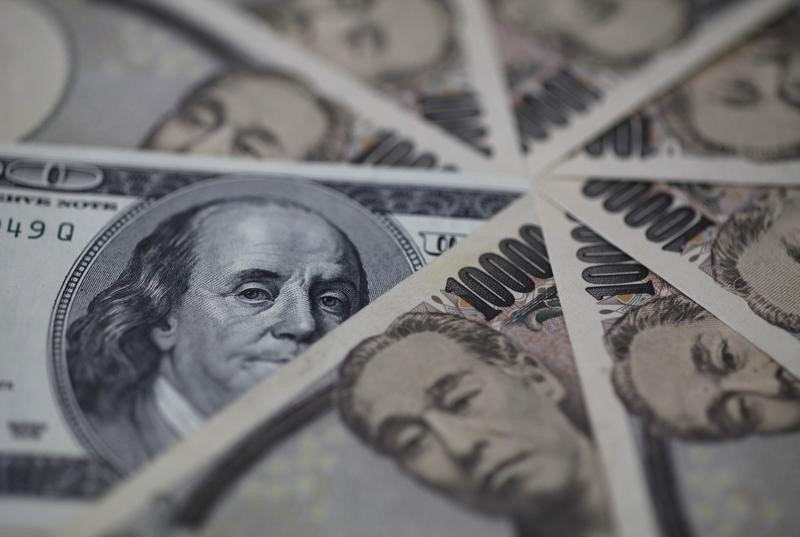Investing.com - The safe haven yen gained ground against the U.S. dollar on Wednesday and the yuan slid as ongoing concerns over the escalating U.S.-China trade war kept investors on tenterhooks.
The yuan eased against the dollar in offshore trade on Wednesday after the People's Bank of China set its official midpoint not much firmer than its previous close. China's currency also opened weaker against the dollar in onshore trade.
The long running trade conflict between Washington and Beijing escalated late last week when U.S. President Donald Trump said he would impose more tariffs on Chinese goods.
China responded on Monday by allowing its currency to weaken past the psychologically important level of 7 per dollar, which immediately prompted the Trump administration to label China a currency manipulator.
The escalation in the trade war has dampened hopes for a quick resolution to the conflict.
Trump indicated Tuesday that he is prepared to dig in for the long term, tweeting he is prepared to provide support for U.S. farmers in 2020 should they face pressure from China.
The dollar was down 0.19% to 106.26 yen by 03:56 AM ET (07:56 GMT). On Tuesday, the greenback rallied from a low of 105.51 yen to as high as 107.07 yen in a volatile session sparked by worries about China's currency policy.
The offshore yuan fell to 7.0701 per dollar, not far from 7.1397, the lowest since international trading in the currency began in 2010.
The onshore yuan opened trade at 7.0369 per dollar versus its last close at 7.0250
"Escalation of U.S.-China trade frictions has deteriorated market sentiment, which will eventually make Treasury yields go lower and the yen go higher," said Tohru Sasaki, head of Japan markets research at JP Morgan Securities in Tokyo.
"We still expect the dollar to rise to 7.35 yuan by the end of the year, which will make the U.S. administration very uncomfortable. I expect the dollar to fall to 104-103 yen by the end of the year."
The U.S. dollar index which measures the greenback against six major currencies was little changed at 97.44.
Risk sentiment deteriorated further after the Reserve Bank of New Zealand stunned traders by cutting interest rates by a larger than expected 50 basis points to a record low of 1.00%, highlighting the growing concern policymakers have about the global economy.
The New Zealand dollar was last down 1.65% at 0.6412.
Meanwhile, the euro was a touch lower against the dollar at 1.1187.
In the Eurozone, data on Wednesday showed that German industrial production fell 1.5% in June, more than the 0.5% decline expected by economists and compared to growth of 0.1% the previous month.
The data added to indications that the euro area’s largest economy shrank in the second quarter, which will act as a drag on the bloc as a whole.
--Reuters contributed to this report
